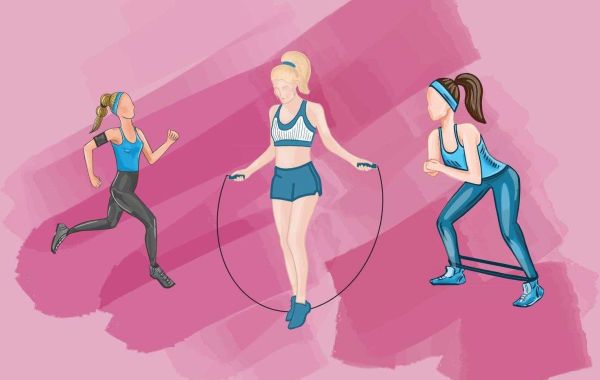Understanding Why Exercise Works
Exercise isn’t just a temporary fix—it’s a transformative practice that impacts every system in the human body. From cellular repair and hormonal balance to psychological health and brain function, exercise works because it activates our bodies in the way nature intended. Movement improves longevity, boosts immunity, and significantly increases quality of life.
The Science Behind Exercise and Its Impact
1. Cardiovascular Efficiency
When we engage in aerobic activities like running, brisk walking, or cycling, our heart rate increases, pumping oxygen-rich blood throughout the body. This improves:
Heart strength
Lung capacity
Circulation
Cholesterol levels
The result is a significantly reduced risk of stroke, heart disease, and hypertension.
2. Muscular Strength and Endurance
Strength training activates muscle fibers, increasing size and stamina. Over time, regular resistance exercise:
Builds lean muscle mass
Boosts metabolism
Improves bone density
Reduces risk of osteoporosis
Weight lifting, bodyweight exercises, and resistance bands are excellent tools for muscle development.
3. Brain Power and Cognitive Clarity
Exercise enhances neuroplasticity, the brain’s ability to adapt and grow. Activities like aerobic workouts and coordination drills:
Promote neuron generation in the hippocampus (the memory center)
Release dopamine, serotonin, and endorphins
Improve focus, memory, and learning
Exercise is increasingly prescribed for individuals managing ADHD, anxiety, and depression because it offers results that rival medication.
Exercise Works for Mental Health and Emotional Wellness
Stress Reduction
Physical activity is a natural stress reliever. It lowers levels of cortisol (the stress hormone) and boosts mood-enhancing chemicals. Just 30 minutes of moderate exercise daily can:
Reduce anxiety symptoms
Improve sleep quality
Enhance mood and resilience
Depression and Anxiety Management
Studies show that regular physical exercise is as effective as antidepressants in some cases of mild to moderate depression. It provides a sense of accomplishment, structure, and distraction.
Exercise Works for Weight Management and Metabolism
Exercise increases caloric expenditure, helping to:
Burn fat
Build lean muscle
Enhance metabolic efficiency
When combined with a healthy diet, physical activity is the most effective long-term strategy for sustainable weight loss and healthy body composition.
Types of Exercise That Deliver Results
1. Aerobic Exercise (Cardio)
Increases heart rate and breathing. Examples:
Jogging
Swimming
Rowing
Zumba
Benefits: Cardiovascular health, stamina, fat loss.
2. Strength Training
Builds muscle and boosts metabolism. Examples:
Dumbbells
Kettlebells
Resistance bands
Bodyweight exercises
Benefits: Muscle tone, posture, injury prevention.
3. Flexibility and Mobility
Improves range of motion and reduces injury risk. Examples:
Yoga
Pilates
Dynamic stretches
Benefits: Joint health, posture, relaxation.
4. Balance and Coordination
Essential for injury prevention and athletic performance. Examples:
Tai chi
Balance boards
Core workouts
Benefits: Stability, agility, fall prevention.
How Exercise Works Across Different Age Groups
Children and Teens
Builds strong bones and muscles
Improves concentration and behavior
Encourages healthy lifelong habits
Adults
Prevents chronic illnesses like diabetes and hypertension
Supports mental clarity and emotional balance
Aids in stress and weight management
Seniors
Maintains independence
Reduces fall risk
Enhances cognitive function
Creating a Sustainable Exercise Routine
Set SMART Goals
Specific: “Walk 30 minutes daily.”
Measurable: “Log steps with a fitness tracker.”
Achievable: “Start with 3 times a week.”
Relevant: “Target heart health.”
Time-bound: “Track progress for 1 month.”
Start Small and Build Gradually
Begin with low-impact activities like walking or yoga
Gradually increase intensity or duration
Mix different forms to avoid plateaus
Make It Enjoyable
Choose activities you love
Involve a friend or family member
Set personal challenges and celebrate progress
Why Exercise Works in Disease Prevention
Regular physical activity plays a critical role in preventing or managing over 35 chronic conditions, including:
Type 2 Diabetes
Obesity
Stroke
Osteoarthritis
Certain cancers
Alzheimer’s disease
It improves immune system function and enhances the body's ability to fight off viruses and infections.
Exercise Works Without Equipment
You don’t need a gym to benefit from exercise. Try:
Bodyweight circuits: squats, lunges, push-ups
Stair climbing
Jump rope
Dancing at home
Consistency is more important than equipment.
Tracking Progress and Staying Motivated
Use Technology
Fitness apps (MyFitnessPal, Strava)
Wearables (Fitbit, Apple Watch)
Online communities and forums
Stay Accountable
Keep a workout journal
Set monthly milestones
Join a local fitness group or class
Reward Yourself
Treat yourself after meeting a goal
Take a rest day to appreciate your progress
Conclusion: Why Exercise Works and Why It Matters
Exercise works because it addresses the full spectrum of human health—physical, emotional, and cognitive. It heals, strengthens, empowers, and renews. Whether your goal is to run a marathon, reduce stress, lose weight, or simply feel more energized, regular movement is the key.








